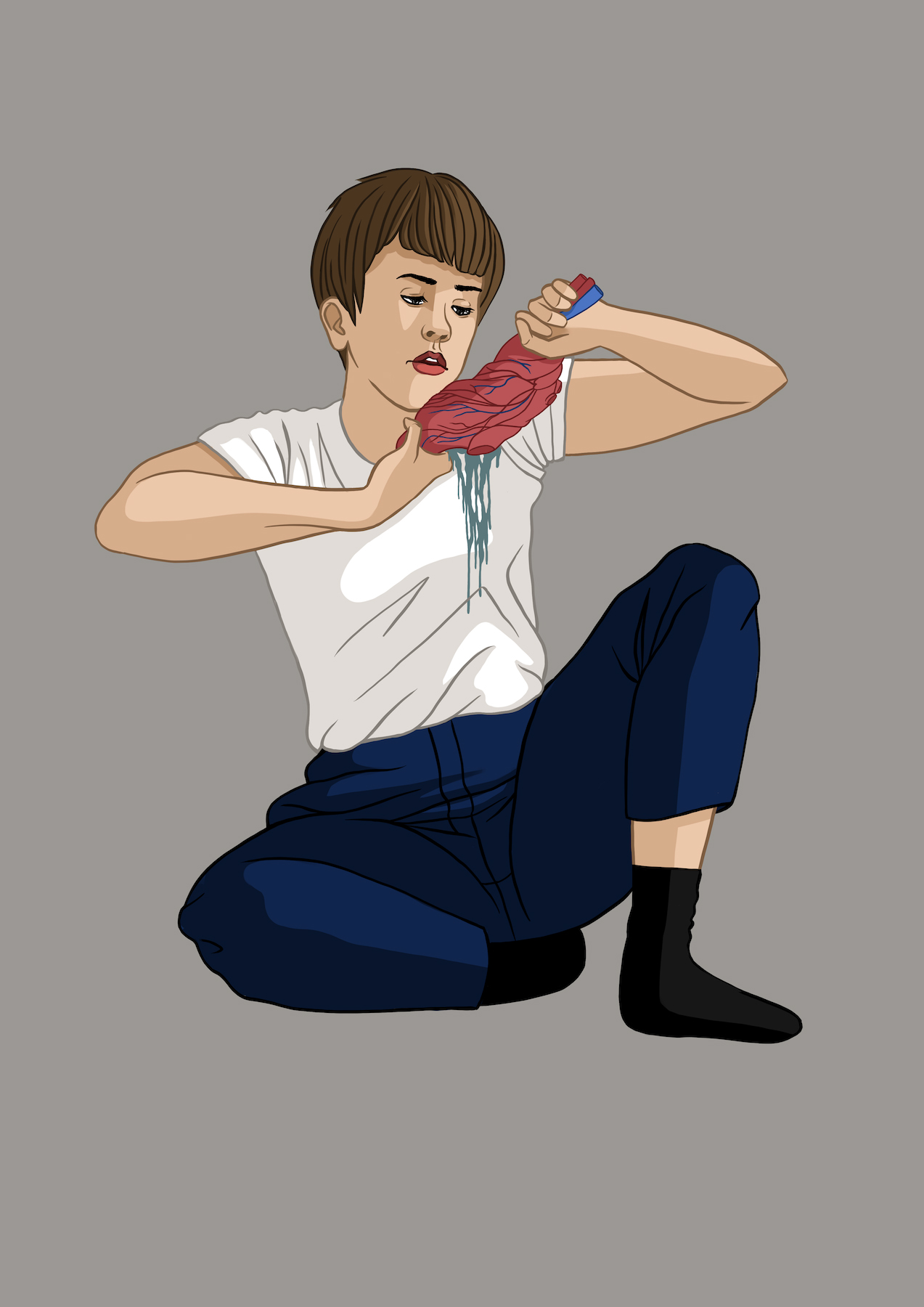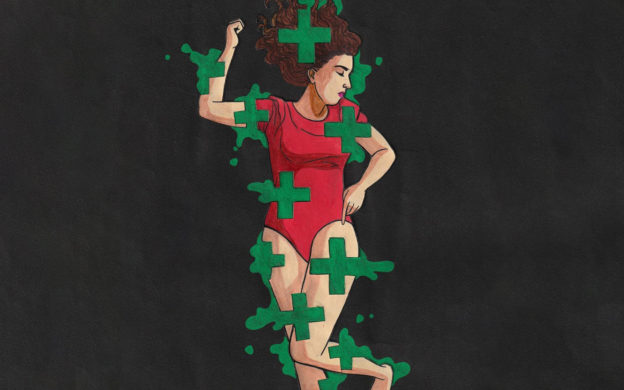Finnish illustrator Linda Vuorenvirta, based in Helsinki, creates both digital and traditional illustrations. She uses Procreate for her digital work and pens, pencils, and markers for her handmade pieces. With a BFA in animation and an MA in new media, Linda has a fresh perspective on both the making and the meaning of illustration.
Her work is character-driven and compelling, with images that are in turn funny and strange. Linda’s imagery often evokes questions of mental health, loneliness, and internal dialogue; often women (or, a single woman) are centered.
The fact that traditional illustration sits alongside digital work is one of the things that makes Linda’s catalogue so interesting. Both methods are given equal attention, and it’s fascinating to see how one method might be more engaging for a specific image, a kind of exploration of the way we experience artistic mediums.
We spoke with Finnish illustrator Linda Vuorenvirta about her work, upcoming exhibitions, and how her political perspective has evolved:
When did you begin working as an artist?
I’ve been an artist in some capacity for as long as I can remember, but I started being really serious about it when I first went to art school at age 14. As for actually making money from my art, I think that was after I finished my bachelor’s degree.
 |  |
Do you work full time on your art, or do you pursue other work as well?
Art isn’t my only source of income, but it’s the only industry that I’m really passionate about.
Why did you choose illustration and animation?
This has a really cheesy and kind of cliche answer, but I honestly was inspired to study animation because of the films and TV series that I grew up with.
I was (and still am) a huge Disney fan. My animation and illustration styles are visually similar since illustration is basically just still frames from a hypothetical animation. I can’t animate every scene that I want to depict, so my desire to do illustration developed to fulfil that need.
 |  |
You work both digitally and on paper. How are these processes different for you?
One of the biggest differences between digital and traditional work is, of course, the ability to hit undo when you make a mistake. That’s kind of a double-edged sword, so I didn’t want to give up either method of working. If I’m going for a refined result I’ll probably work digitally to have that safety net, but if I’m just sketching for fun I like to work on paper. Sometimes I also like to use a non-erasable tool like a ballpoint pen. It’s hard to explain, but there’s something invigorating about knowing that you can’t erase a mistake or hit undo. Maybe it’s because when I do make mistakes with pen and paper, it forces me to be creative and find another way to make the drawing work without fixing my mistake.
You emphasize storytelling and characters in your work. Why is this important to you, and how does it ground your work? Do you feel that every piece should have a narrative behind it, even if the viewer doesn’t necessarily understand it?
There are stories behind every living being and every place and every object that we see, and that’s fascinating to me. I’m constantly thinking and running things over in my head, and I try to not think of anything at just a surface level. If I’m drawing a character, I do think it’s important to give indications about their dimensionality and humanness. Not every character I draw has a backstory or even a name (quick sketches especially), but whenever I can, I try to add details that suggest the character’s personality and/or history.
 |  |
Tell us about your current exhibition. What it’s all about and what can viewers expect to see?
My current exhibition, “Neuron Bomb”, is about mental health. I used my own lifelong experiences with mental health issues as a springboard to create work about different mental illnesses and other troubles in our neurochemistry. It consists of 17 illustrations, mostly digital prints but also several traditional media pieces.
Your work is often political. Is this something that came organically for you, or was there an evolution of your work in this regard?
There was an evolution in the sense that I wasn’t always compelled to create work about political issues. My desire to create such work correlates with me educating myself about social issues and becoming more invested in them. Once I learned more about the injustices in the world, I really wanted to help raise awareness about them.
Do you feel your art is particularly Finnish or Nordic? Why or why not?
I haven’t consciously tried to make my art Finnish or Nordic, but there are some similarities. I use cel-shading in my illustrations, with big areas of flat colour, which is something that a lot of Finnish illustrations have. I think that fits into the larger trend of Nordic minimalism.
I also do love deep, rich, forest-like colours, which is popular with Nordic art as well.
 |  |
What do you think of the current Finnish or Nordic art scene? Is it inclusive? Hard to get into?
I haven’t encountered an abnormal amount of exclusivity, so I’m hopeful about the state of the Finnish art scene. I’ve seen a lot of artists who represent minority groups have success also, so that’s amazing and bodes well.
Where can people find or buy your art?
My current exhibition “Neuron Bomb” is at Kulttuurikeskus Sähinä on Lauttasaari until 31st October 2019.
My next exhibition “Cycles to Break” will be at Alakulttuurikeskus Loukko, in Kallio, for all of December 2019.
Original artwork is available for sale here, and you can see all kinds of artwork on my website and Instagram.

Disclosure: Linda Vuorenvirta is a Scandinavia Standard contributor, unrelated to her art. The editor asked her to be part of this series.

